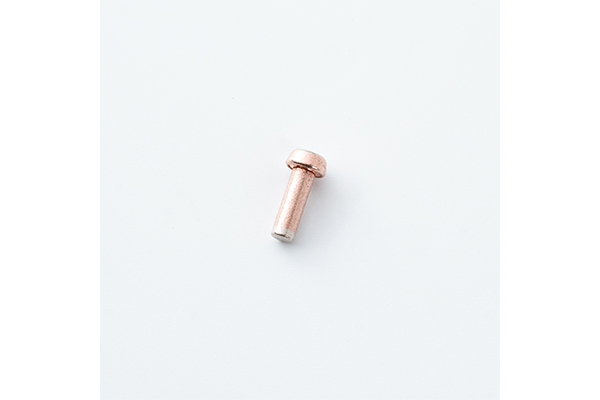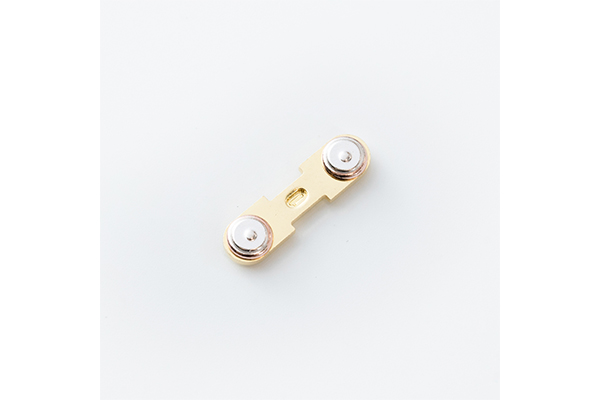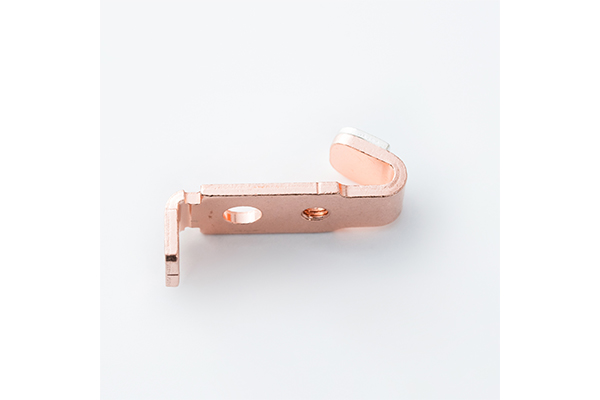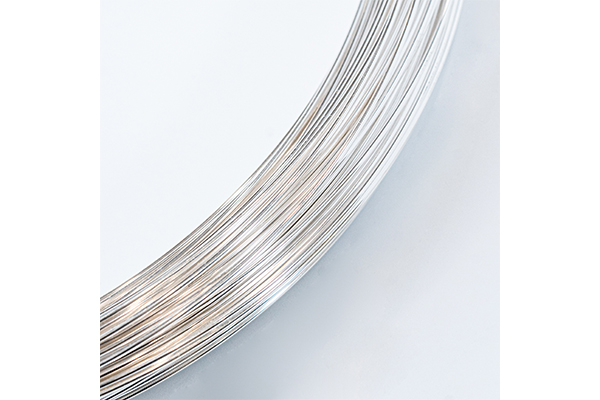Why is silver cadmium oxide contact material irreplaceable in electrical equipment?
Release Time : 2025-07-22
In the field of modern electrical engineering and electronic manufacturing, the choice of contact material is directly related to the stability, safety and service life of the equipment. As a high-performance electrical contact material, silver cadmium oxide (AgCdO) plays an irreplaceable role in key electrical components such as circuit breakers, relays, and switches with its excellent conductivity, stable electrical properties, and outstanding arc resistance. It not only carries the function of conducting current, but also is the core guarantee to ensure the stable operation of equipment under complex working conditions.
Silver cadmium oxide material is a composite of high-purity silver and cadmium oxide, combining the high conductivity of silver with the arc resistance and anti-welding properties of cadmium oxide. This material can still maintain low contact resistance and stable current conduction capability in an electrical environment with high temperature, high humidity, and frequent switching, effectively reducing power loss and temperature rise, thereby improving the overall equipment operation efficiency and safety. Especially in frequently operated electrical appliances such as circuit breakers and relays, its excellent anti-oxidation and anti-corrosion properties make it less likely to fail due to oxidation or have poor contact during long-term use, greatly extending the maintenance cycle and service life of the equipment.
From the manufacturing process point of view, silver cadmium oxide contacts use a variety of advanced processes such as powder metallurgy, hot pressing sintering, and precision stamping to ensure that the material structure is dense, the composition is uniform, the surface is smooth, and there are no scratches. These process details not only improve the mechanical strength and conductivity of the contacts, but also enhance their stability in high-frequency switching environments. In addition, the material has passed a number of international environmental certifications and complies with environmental standards such as RoHS, meeting the requirements of modern industry for green manufacturing and sustainable development.
Silver cadmium oxide contacts are widely used in low-voltage electrical systems, including circuit breakers, leakage protection switches, relays, push button switches, panel switches, etc. In power control systems, it ensures the stable switching of current and the precise control of loads; in automotive electrical systems, it supports key links such as starting, ignition, and signal control; in industrial automation equipment, it ensures the efficient response of the control system and the reliability of long-term operation. It is this wide applicability and high stability that makes silver cadmium oxide the "gold standard" in electrical contact materials.
At the same time, silver cadmium oxide is not the only choice. Under different application requirements, alternative materials such as silver nickel (AgNi), silver tin oxide (AgSnO₂), and silver zinc oxide (AgZnO) also have their own advantages. For example, silver nickel performs better in DC relays, silver tin oxide has more advantages in environmental protection, and silver zinc oxide is more competitive in cost control. However, silver cadmium oxide still dominates in many high-demand scenarios, especially in high-end electrical equipment with extremely high requirements for conductivity, arc resistance, and stability. Its comprehensive performance is still difficult to be completely replaced.
With the accelerated advancement of electrification and intelligentization, the performance requirements for electrical contact materials are also constantly increasing. Silver cadmium oxide materials are continuously optimized towards higher density, lower resistance, longer life, and more environmental protection. In the future, it will not only continue to play a key role in the traditional power control field, but will also play an increasingly important role in emerging fields such as new energy vehicles, smart grids, and industrial robots.
Silver cadmium oxide material is a composite of high-purity silver and cadmium oxide, combining the high conductivity of silver with the arc resistance and anti-welding properties of cadmium oxide. This material can still maintain low contact resistance and stable current conduction capability in an electrical environment with high temperature, high humidity, and frequent switching, effectively reducing power loss and temperature rise, thereby improving the overall equipment operation efficiency and safety. Especially in frequently operated electrical appliances such as circuit breakers and relays, its excellent anti-oxidation and anti-corrosion properties make it less likely to fail due to oxidation or have poor contact during long-term use, greatly extending the maintenance cycle and service life of the equipment.
From the manufacturing process point of view, silver cadmium oxide contacts use a variety of advanced processes such as powder metallurgy, hot pressing sintering, and precision stamping to ensure that the material structure is dense, the composition is uniform, the surface is smooth, and there are no scratches. These process details not only improve the mechanical strength and conductivity of the contacts, but also enhance their stability in high-frequency switching environments. In addition, the material has passed a number of international environmental certifications and complies with environmental standards such as RoHS, meeting the requirements of modern industry for green manufacturing and sustainable development.
Silver cadmium oxide contacts are widely used in low-voltage electrical systems, including circuit breakers, leakage protection switches, relays, push button switches, panel switches, etc. In power control systems, it ensures the stable switching of current and the precise control of loads; in automotive electrical systems, it supports key links such as starting, ignition, and signal control; in industrial automation equipment, it ensures the efficient response of the control system and the reliability of long-term operation. It is this wide applicability and high stability that makes silver cadmium oxide the "gold standard" in electrical contact materials.
At the same time, silver cadmium oxide is not the only choice. Under different application requirements, alternative materials such as silver nickel (AgNi), silver tin oxide (AgSnO₂), and silver zinc oxide (AgZnO) also have their own advantages. For example, silver nickel performs better in DC relays, silver tin oxide has more advantages in environmental protection, and silver zinc oxide is more competitive in cost control. However, silver cadmium oxide still dominates in many high-demand scenarios, especially in high-end electrical equipment with extremely high requirements for conductivity, arc resistance, and stability. Its comprehensive performance is still difficult to be completely replaced.
With the accelerated advancement of electrification and intelligentization, the performance requirements for electrical contact materials are also constantly increasing. Silver cadmium oxide materials are continuously optimized towards higher density, lower resistance, longer life, and more environmental protection. In the future, it will not only continue to play a key role in the traditional power control field, but will also play an increasingly important role in emerging fields such as new energy vehicles, smart grids, and industrial robots.







